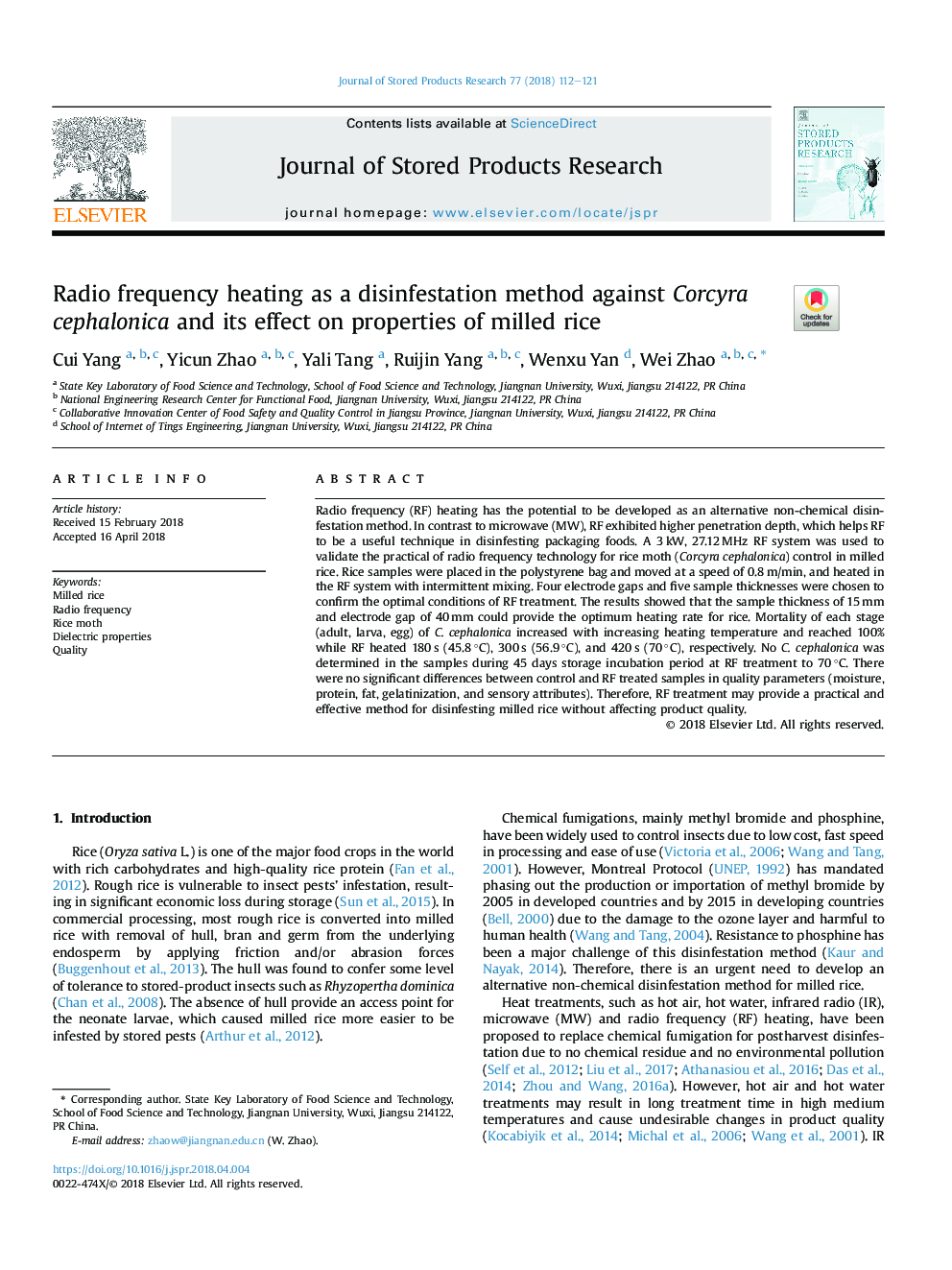| Article ID | Journal | Published Year | Pages | File Type |
|---|---|---|---|---|
| 8881642 | Journal of Stored Products Research | 2018 | 10 Pages |
Abstract
Radio frequency (RF) heating has the potential to be developed as an alternative non-chemical disinfestation method. In contrast to microwave (MW), RF exhibited higher penetration depth, which helps RF to be a useful technique in disinfesting packaging foods. A 3â¯kW, 27.12â¯MHz RF system was used to validate the practical of radio frequency technology for rice moth (Corcyra cephalonica) control in milled rice. Rice samples were placed in the polystyrene bag and moved at a speed of 0.8â¯m/min, and heated in the RF system with intermittent mixing. Four electrode gaps and five sample thicknesses were chosen to confirm the optimal conditions of RF treatment. The results showed that the sample thickness of 15â¯mm and electrode gap of 40â¯mm could provide the optimum heating rate for rice. Mortality of each stage (adult, larva, egg) of C. cephalonica increased with increasing heating temperature and reached 100% while RF heated 180â¯s (45.8â¯Â°C), 300â¯s (56.9â¯Â°C), and 420â¯s (70â¯Â°C), respectively. No C. cephalonica was determinedâin the samples during 45 days storage incubation period at RF treatment to 70â¯Â°C. There were no significant differences between control and RF treated samples in quality parameters (moisture, protein, fat, gelatinization, and sensory attributes). Therefore, RF treatment may provide a practical and effective method for disinfesting milled rice without affecting product quality.
Related Topics
Life Sciences
Agricultural and Biological Sciences
Agronomy and Crop Science
Authors
Cui Yang, Yicun Zhao, Yali Tang, Ruijin Yang, Wenxu Yan, Wei Zhao,
